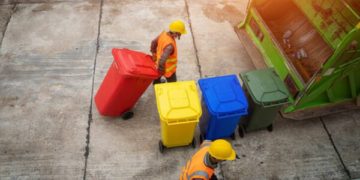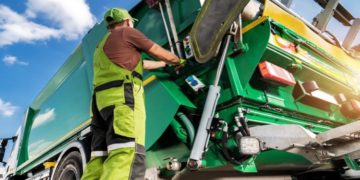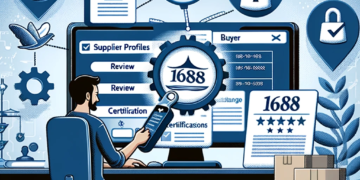Health and safety regulations surround almost every workplace and industry. These regulations aim to ensure the well-being of the employees in the workplace, ensuring their exposure to hazards and threats in the workplace is limited. From offices and hospitals to warehouses and construction sites, there are regulations with which employers and businesses are legally required to stay compliant. Similarly, in the construction industry, the presence and exposure to hazards and risks are numerous, and these hazards can seriously threaten the health and safety of the workers at the site.
Therefore, employers are legally required to comply with these regulations and implement effective health and safety policies in the workplace to mitigate these risks. Not only do these health and safety policies provide generous benefits to the firm and its employees, but they are also an effective method to assure compliance with health and safety laws.
This article will highlight some of the health and safety regulations surrounding construction sites.
Regulations surrounding construction sites
Health and Safety at Work Act 1974
Construction sites are dynamic environments, with potential dangers such as heavy machinery, working at heights, and exposure to hazardous substances. The Health and Safety at Work Act 1974 is a pillar of protection within the construction industry, where hazards and risks lurk everywhere. By imposing a robust regulatory framework, this act ensures that employers, employees, and other stakeholders remain steadfast in their commitment to maintaining high health and safety standards, ultimately safeguarding the lives of those involved in construction projects.
Key provisions
- Duty of Care: The Act imposes a legal obligation on employers to ensure their employees’ health, safety, and welfare as reasonably practicable. Employers must provide a safe working environment, suitable training, and necessary supervision to protect their workers from harm.
- Risk Assessment: Employers must conduct thorough risk assessments to identify hazards, evaluate risks, and implement suitable control measures. These assessments enable proactive steps to mitigate risks associated with construction activities.
- Employee Responsibilities: Employees have a duty to take reasonable care of their health and safety, as well as other people in the workplace who may be affected by their actions. They must cooperate with employers, follow safety instructions, and utilize provided safety equipment appropriately.
- Consultation and Communication: The Act emphasizes the importance of adequate consultation and communication between employers and employees regarding health and safety matters. It encourages the establishment of safety committees or representatives to foster a collaborative approach towards identifying and addressing potential hazards.
Aim
- Prevention of accidents and illnesses
- Protection for workers and public
- Legal compliance and enforcement
Lifting Operations and Lifting Equipment Regulations
LOLER stands as a vital regulation within the construction industry, ensuring the safe use and maintenance of lifting equipment. Construction sites commonly utilize cranes, hoists, forklifts, and other lifting machinery to move heavy loads and materials. These operations present inherent risks, making adherence to LOLER indispensable. By enforcing comprehensive safety measures, LOLER helps mitigate accidents, prevent injuries, and enhance overall worksite safety.
Key provisions
- Thorough Examination: LOLER mandates that lifting equipment undergoes regular and comprehensive examinations by competent persons. These examinations ensure the equipment’s fitness for use, identifying any defects or deterioration that may compromise safety.
- Planning and Risk Assessment: Before any lifting operation, the regulation requires a meticulous assessment of potential risks and hazards. Adequate planning ensures that appropriate control measures are in place, such as selecting the right equipment, using proper lifting accessories, and considering load capacity.
- Competence and Training: LOLER emphasizes the importance of having trained and competent personnel involved in lifting operations. Employers are responsible for providing appropriate LOLER training to employees, ensuring they possess the necessary skills and knowledge to perform their roles safely.
- Maintenance and Record-Keeping: LOLER mandates the regular maintenance of lifting equipment, including inspections, repairs, and replacements. Detailed records of all reviews, examinations, and care activities must be kept, ensuring compliance and providing a comprehensive audit trail.
Aim
- Preventions of accidents and injuries
- Compliance and accountability
- Continuous improvement
Control of Substances Hazardous to Health (COSHH) Regulations 2002
COSHH Regulations 2002 hold significant relevance in the construction industry, where workers may come into contact with various hazardous substances. These substances can include dust, chemicals, fumes, gases, and biological agents. The regulation aims to protect workers from the potential health risks associated with these substances, ensuring their well-being throughout their construction careers.
Key provisions
- Risk Assessment: COSHH requires employers to assess and evaluate the risks posed by hazardous substances in the workplace. This includes identifying potential exposure routes, considering the severity of the risks, and implementing suitable control measures to prevent or minimize exposure.
- Control Measures: The regulation emphasizes implementing control measures to mitigate exposure to hazardous substances. Employers must adopt engineering controls, such as ventilation systems or enclosed processes, and provide personal protective equipment (PPE) when necessary.
- Training and Information: COSHH mandates that employers provide adequate training, instruction, and information to employees regarding the risks associated with hazardous substances. This includes proper handling, storage, disposal procedures, awareness of potential health effects, and emergency response protocols.
- Health Surveillance: Employers must establish appropriate health surveillance programs to monitor workers’ health exposed to hazardous substances. This includes regular medical check-ups and assessments to detect and address any adverse health effects in a timely manner.
Aim
- Prevention of illnesses and injuries
- Compliance and accountability
- Empowering workers
- Continuous improvement
Manual Handling Operations Regulations 1992
The Manual Handling Operations Regulations 1992 are significant in the construction industry, where workers frequently engage in manual handling tasks. These tasks can range from carrying construction materials and operating heavy machinery to moving equipment and tools. The regulations aim to protect workers from injuries, strains, and long-term health implications by addressing the potential risks associated with manual handling, ensuring their well-being throughout their construction careers.
Key provision
- Risk Assessment: The regulations require employers to conduct thorough risk assessments of manual handling operations. This includes identifying potential hazards, evaluating the level of risk, and implementing control measures to minimize or eliminate the risk of injury.
- Avoidance and Reduction of Manual Handling: The regulations emphasize the importance of avoiding manual handling tasks where reasonably practicable. Employers should explore alternative methods, such as mechanical aids or automation, to reduce the need for manual lifting, thereby minimizing the risk of injuries.
- Training and Instruction: Employers are obligated to provide adequate training and instruction to workers engaged in manual handling operations. This includes teaching proper lifting techniques, raising awareness of potential hazards, and ensuring workers have the knowledge and skills to perform their tasks safely.
- Health Surveillance: The regulations recommend implementing health surveillance programs to monitor the well-being of workers engaged in repetitive or strenuous manual handling activities. This helps identify and address any musculoskeletal issues early on, preventing long-term health complications.
Aim
- Injury prevention
- Compliance and accountability
- Empowering workers
- Continuous improvement
Personal Protective Equipment at Work Regulations 1992
PPE Regulations 1992 hold immense relevance in the construction industry, where workers face various hazards on a daily basis. From falls and flying debris to exposure to hazardous substances, construction sites pose significant risks. The regulations aim to protect workers by ensuring that suitable personal protective equipment is provided and used correctly.
Key provision
- Risk Assessment: PPE regulations require employers to conduct thorough risk assessments to identify hazards and determine the appropriate PPE needed to mitigate those risks. This includes assessing the need for harnesses and lanyards when working at heights.
- Selection and Provision of PPE: Employers must provide workers with appropriate PPE free of charge. This includes safety helmets, gloves, protective footwear, high-visibility clothing, and respiratory protection, among others. For tasks involving elevated workspaces, harnesses and lanyards are essential to prevent falls.
- Training and Instruction: Employers must provide comprehensive training and instruction on the correct use, maintenance, and storage of PPE. This includes specialized training, such as harness and lanyard training, to ensure workers can effectively utilize this equipment when working at heights.
- Monitoring and Review: PPE regulations emphasize the importance of monitoring and reviewing the effectiveness of PPE. Employers should regularly assess the suitability and condition of equipment, address any shortcomings, and ensure that workers continue to receive adequate protection.
Aim
- Workers’ safety
- Legal compliance
- Risk mitigation
- Safety culture
Reporting of Injuries, Diseases, and Dangerous Occurrences Regulations 2013
The Reporting of Injuries, Diseases, and Dangerous Occurrences Regulations 2013 hold immense relevance in the construction industry, where the potential for accidents and incidents is prevalent. Construction sites are dynamic environments with various hazards, including falls, machinery-related incidents, and exposure to hazardous substances. RIDDOR aims to ensure that such occurrences are reported, investigated, and managed effectively, thereby improving overall safety and preventing future incidents.
Key provisions
- Reportable Incidents: RIDDOR mandates the reporting of specified incidents, including workplace accidents resulting in death, serious injuries, certain occupational diseases, and dangerous occurrences. Employers, self-employed individuals, and responsible persons must report these incidents to the relevant enforcing authority.
- Timeframes and Methods of Reporting: The regulations outline specific timeframes for reporting incidents, ensuring prompt action. The reporting can be done through various channels, including online platforms, telephone, or written reports. Employers must familiarize themselves with the reporting requirements and promptly notify the appropriate authorities.
- Record Keeping: RIDDOR requires employers to maintain accurate records of reportable incidents and other relevant information. These records play a crucial role in monitoring trends, conducting investigations, and implementing preventive measures to improve workplace safety.
- Investigation and Risk Management: The regulations emphasize the importance of investigating reportable incidents and dangerous occurrences. By identifying the root causes, employers can implement appropriate risk management strategies to prevent similar incidents in the future. This includes conducting thorough investigations, reviewing existing control measures, and implementing necessary improvements.
Aim
- Promoting safety culture
- Effective risk management
- Collaboration and learning
- Legal compliance
Why is compliance with health and safety regulations necessary?
As an employer overseeing a construction site, ensuring compliance with health and safety regulations is paramount. Staying compliant with these regulations not only safeguards the well-being of your workforce but also protects your business from potential legal and financial repercussions. By actively adhering to health and safety regulations, you demonstrate a commitment to creating a safe working environment for your employees.
Secondly, compliance with health and safety regulations demonstrates your commitment to legal obligations. Failure to comply can result in legal penalties, fines, and potential litigation, which can have severe financial implications for your business. By prioritizing compliance, you mitigate these risks and ensure smooth operations without legal setbacks.
Moreover, staying compliant enhances your reputation and credibility within the industry. Clients, stakeholders, and potential partners are more likely to engage with businesses that prioritize the well-being of their employees. Compliance showcases your dedication to upholding industry standards and sets you apart as a responsible and trustworthy employer.
Conclusion
In conclusion, this comprehensive guide has shed light on the importance of staying compliant with health and safety regulations at construction sites. By actively implementing and complying with these regulations, employers demonstrate their commitment to safeguarding the well-being of their workers and creating a secure working environment.
From the control of hazardous substances to the safe operation of lifting equipment, each regulation serves a crucial purpose in mitigating risks and preventing accidents. By conducting thorough risk assessments, providing adequate training, and implementing effective control measures, construction businesses can significantly reduce the occurrence of workplace incidents and improve overall safety standards.
Remember, compliance with health and safety regulations is not just a legal obligation but a moral responsibility towards your workforce. By prioritizing the health and safety of your employees, you not only protect lives but also enhance your business reputation, foster a positive work culture, and ensure long-term success in the construction industry. Let’s build a safer future, one construction site at a time.
David Prior
David Prior is the editor of Today News, responsible for the overall editorial strategy. He is an NCTJ-qualified journalist with over 20 years’ experience, and is also editor of the award-winning hyperlocal news title Altrincham Today. His LinkedIn profile is here.














































































